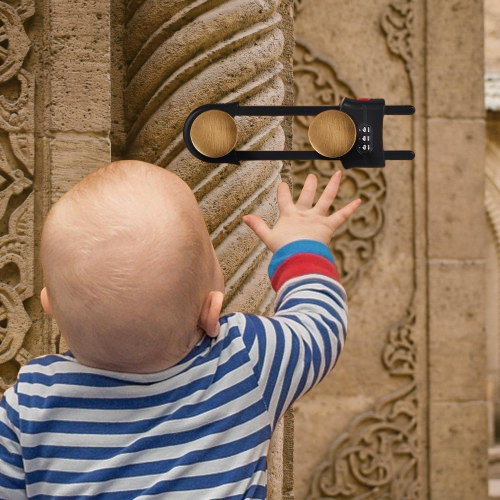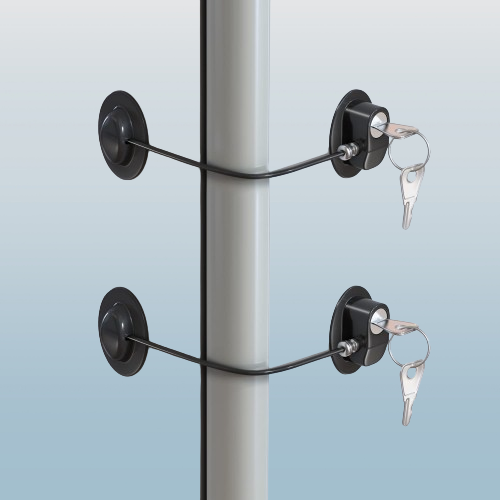January 24, 2024 by kdchy
With regards to file organizers, losing the key can be a baffling encounter. Fortunately, there are ways to pick a file cabinet lock without the key. While it may sound like a daunting task, with the right tools and knowledge, anyone can pick a file cabinet lock.
The most common way of picking a file organizer lock can differ contingent upon the sort of lock, however there are a few general advances that can be followed. One common method involves using a paperclip or a similar tool to manipulate the lock pins. Another method involves using a tension wrench and a pick tool to manipulate the lock mechanism directly. It’s
endeavoring to pick a lock that doesn’t have a place with you without consent is unlawful, so it’s vital to utilize these methods mindfully and morally.

Understanding File Cabinet Locks
With regards to file organizer locks, there are a couple of things to remember. Understanding the types of locks and lock mechanism basics can help you make an informed decision about how to pick a file cabinet lock.
Types of File Cabinet Locks
There are two main types of file cabinet locks: keyed locks and mix locks. Keyed locks are the most notable sort, and they require a key to open the lock. Blend locks, then again, require a particular mix of numbers or letters to open the bureau.
Within keyed locks, there are several subtypes of locks. The most common subtype is the pin tumbler lock, which uses pins of varying lengths to prevent the lock from opening without the correct key. Other subtypes include wafer locks, disc tumbler locks, and lever locks.
Lock Mechanism Basics
File cabinet locks work by preventing the cabinet from being opened without the correct key or combination. The lock system is housed in the cabinet locking bar, which is a metal bar that runs upward at the edge of the bureau.
At the point when the lock is locked in, the locking bar reaches out into an opening in the side of the bureau, keeping the drawers from being opened. To unlock the cabinet, the correct key or combination must be used to retract the locking bar and allow the drawers to be opened.
It is important to note that picking a file cabinet lock should only be done in situations where the owner of the cabinet has lost their key or forgotten their combination. Picking a lock without consent is unlawful and can bring about criminal allegations.
Preparation for Picking a Lock
Before attempting to pick a file cabinet lock, it is important to gather the necessary tools and consider safety and legal implications.
Gathering Necessary Tools
To pick a file cabinet lock, one will need a few tools. These include a tension wrench and a lock pick.A strain wrench is utilized to apply pressure to the lock, while a lock pick is utilized to control the pins inside the lock.
There are a few kinds of lock picks accessible, including snare picks, rake picks, and jewel picks. It is prescribed to utilize a snare pick for novices as it is the most flexible and simple to utilize.
Notwithstanding these devices, one may likewise require a spotlight to see inside the lock and a grease, for example, WD-40 to make the lock simpler to pick.
Safety and Legal Considerations
It is vital to take note of that endeavoring to pick a lock without legitimate approval can be unlawful and may bring about criminal allegations. Therefore, it is recommended to only attempt to pick a lock that one owns or has been given permission to pick.
Moreover, it is vital to play it safe while endeavoring to pick a lock. One should wear gloves to protect their hands and avoid using excessive force when manipulating the lock as it can damage the lock or the surrounding area.
It is likewise critical to remember that picking a lock can be a sensitive and tedious cycle. It may take several attempts before successfully picking the lock, so one should be patient and persistent.
Lock Picking Techniques
With regards to picking a file organizer lock, there are a few strategies that can be utilized. Every strategy requires an alternate arrangement of instruments and abilities. In this part, we will examine the three most normal lock picking procedures: Single Pin Picking, Raking, and Bypassing.
Single Pin Picking
Single Pin Picking is a technique where the lock is picked one pin at a time. This procedure requires a great deal of persistence and skill.
To use this technique, the lock picker needs a tension wrench and a pick. The tension wrench is used to apply tension to the lock while the pick is used to lift the pins one at a time until the lock opens.
Raking
Raking is a technique where the lock is picked by rapidly moving the pick up and down while applying tension to the lock. This technique is faster than Single Pin Picking but requires less skill.
To use this technique, the lock picker needs a rake and a tension wrench. The rake is embedded into the lock and went all over quickly while strain is applied to the lock. With enough practice, this strategy can be extremely powerful.
Bypassing
Bypassing is a technique where the lock is opened without picking it. This procedure is in many cases utilized when the lock is too challenging to even consider picking or when the lock picker doesn’t have the fundamental apparatuses.
There areA shim is a meager piece of metal that is embedded into the keep to push the keeping instrument far removed. A bump key is a specially cut key that is used to bump the pins in the lock into place.
In conclusion, each lock picking technique has its own advantages and disadvantages. The best technique to use will depend on the lock and the skills of the lock picker. With practice and patience, anyone can learn to pick a file cabinet lock.
Troubleshooting Common Issues
When attempting to pick a file cabinet lock, there are a few common issues that may arise. Here are some troubleshooting tips to help overcome these issues:
Stuck Pins
One of the most common issues when picking a file cabinet lock is encountering stuck pins. This can occur when the pins are not properly aligned and become stuck in the lock cylinder. To fix this issue, try releasing tension on the tension wrench and gently jiggling the pick tool to reset the pins. It might take a couple of endeavors to get the pins to adjust appropriately, however with tolerance and ingenuity, the lock ought to ultimately open.
Damaged Locks
If the lock is damaged or worn, it may be difficult or impossible to pick. For this situation, it could be important to completely supplant the lock. Before attempting to pick the lock, inspect it for any signs of damage or excessive wear. On the off chance that the lock is harmed, picking it might bring about additional harm and make it much more hard to open. In such cases, looking for the assistance of an expert locksmith is ideal.
Worn-out Picks
Another common issue when picking a file cabinet lock is using worn-out or damaged picks. Over time, picks can become dull or bent, making it difficult to properly manipulate the pins. To aviod this issue, it is essential to utilize top notch picks and supplant them on a case by case basis. It might likewise be useful to have different singles out hand to guarantee that you have the right instrument to get everything taken care of.
By following these troubleshooting tips, you can increase your chances of successfully picking a file cabinet lock. Make sure to be patient and steady, and go ahead and proficient assistance if necessary.
After Picking the Lock
Securing the File Cabinet
When the file organizer lock has been picked, it means a lot to tie down the bureau to forestall unapproved access from here on out. One choice is to supplant the lock with a safer one. Another option is to add a padlock or combination lock to the cabinet.
To protect the bureau with a latch or blend lock, drill an opening in the side of the bureau and introduce the lock. Be sure to choose a lock that is strong and difficult to pick. Additionally, consider securing the cabinet to a wall or floor to prevent it from being easily moved or stolen.
When to Replace the Lock
If the file cabinet lock has been picked, it may be time to replace it with a more secure one. Search for a lock that is challenging to pick and made of top notch materials. Consider a lock with numerous pins or a mix lock for added security.
While supplanting the lock, make certain to pick one that is viable with the bureau. Some file cabinets require specific lock types, so check with the manufacturer or consult a locksmith to ensure you choose the right lock for your cabinet.
Remember, picking a file cabinet lock should only be done in situations where you have legal access to the cabinet. Picking a lock on a bureau that doesn’t have a place with you is unlawful and can bring about criminal accusations.

